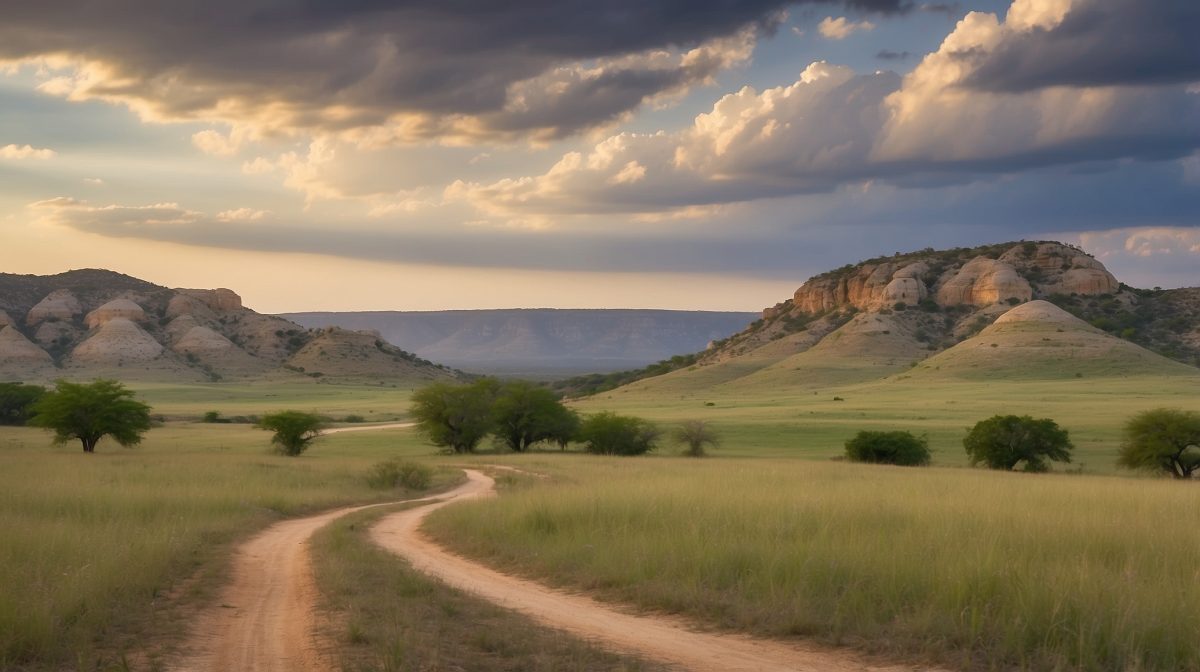Now, the Hill Country’s got a geography as diverse as the folks who live here, stretching across the central and southern parts of the Lone Star State. It’s a land where the bluebonnets paint the fields in spring and the live oaks offer shade from that Texas sun. But where does Bell County fit into this picturesque landscape? Stick around, partner, ’cause we’re about to dive deep into the heart of Texas to find out.
What Defines Texas Hill Country?
Imagine yourself drivin’ down a country road, windows down, with a view of rolling hills stretchin’ out as far as the eye can see. That’s the Texas Hill Country for ya, a place where the live oaks stand tall and the bluebonnets blanket the ground come springtime. It’s more than just a place; it’s a feeling, a way of life that’s as easygoing as a slow-moving river. Geographically speakin’, we’re talkin’ about an area that takes up a good chunk of Central Texas, but it ain’t just about where it starts and ends. It’s the culture and history that make the Hill Country what it is, a true Texas treasure.
The boundaries of the Texas Hill Country are often debated, but most folks agree it stretches from the outskirts of San Antonio to the fringes of West Austin, and from the northern reaches of San Saba down to the southern tips of Bandera. But it’s not just the lay of the land that defines it; it’s the German and Czech heritage, the historic dance halls, and the legendary Texas BBQ that give this region its soul. It’s a place where traditions are held dear, and the past is as present as the stars at night.
A Look at Bell County
Now, let’s turn our gaze to Bell County, a gem nestled right here in the great state of Texas. Bell County’s got a history as rich as a pecan pie, with towns like Temple and Killeen that have stories to tell and hospitality to share. It’s a place where the prairies meet the hills, and the Chisholm Trail once ran through, herding cattle and shaping the frontier. Bell County’s natural beauty might not be the same as the limestone outcrops of the Hill Country, but it’s got its own brand of charm, with winding rivers and open skies that’ll take your breath away.
When it comes to culture and lifestyle, Bell County’s got a flavor all its own. Sure, it might not be the spitting image of the Hill Country norms, but it shares that same Texas spirit. It’s a place where community means everything, and folks are as friendly as they come. You’ll find rodeos, festivals, and a love for the land that’s as deep as any you’ll find in the heart of the Hill Country.
Is Bell County in the Texas Hill Country?
Alright, here’s where the rubber meets the road. Some folks are as sure as a sunrise that Bell County’s part of the Texas Hill Country, while others might beg to differ. The debate’s hotter than a Fourth of July barbecue, with opinions flaring up like fireworks. Geographically, Bell County sits on the edge of what many consider the traditional Hill Country boundaries, but it’s close enough to be part of the conversation. It’s like bein’ on the front porch of the Hill Country—close enough to enjoy the view without bein’ smack dab in the middle of it.
There’s more to it than just a spot on a map, though. Bell County shares some cultural and economic ties with the Hill Country that can’t be ignored. From the agricultural practices to the local businesses that draw inspiration from Hill Country traditions, there’s a kinship that goes beyond county lines. It’s a connection that’s as much about the shared values and way of life as it is about the physical landscape.
Why the Confusion?
So why all the hullabaloo about Bell County’s place in the Texas Hill Country? Well, it’s a bit like tryin’ to nail jelly to a wall—there’s a lot of wiggle room in how folks define the boundaries of the Hill Country. Maps vary, and different organizations have their own ideas about where that line in the dirt is drawn. It’s enough to make your head spin like a lasso at a rodeo. And then there’s the perspective of the locals—some of whom might tip their hat to the Hill Country, while others might say they’re just neighbors, friendly but not family.
It’s this very debate that keeps the conversation lively and interesting. Depending on who you ask, you might get a different answer every time. It’s a testament to the diversity and complexity of Texas geography and identity. Bell County sits in a unique position, where it’s influenced by the Hill Country but also stands on its own two feet with a distinct character and culture.
The Verdict on Bell County
After chewin’ on the facts and hearin’ out the locals, it’s time to call it like I see it. Bell County, bless its heart, may not be in the heart of the Texas Hill Country, but it’s close enough to feel its warmth. It’s got one boot in the door, so to speak, with its proximity to known Hill Country areas and its shared cultural threads. But let’s not get bogged down in labels—what really matters is the spirit of the place, and Bell County’s got that in spades.
The nuances of this argument show just how much regional identity means to us Texans. Where Bell County stands in relation to the Hill Country might be up for debate, but there’s no question that it’s a part of the rich tapestry that makes up our great state. It’s a reminder that sometimes, borders are less important than the stories and the people that make up a region.
Bell County’s Relationship with Texas Hill Country
Now, even if Bell County ain’t exactly in the Hill Country, it sure does share a lot of the same traditions and influences. You’ll find that Hill Country vibe in the local music, the food, and the way folks take care of each other. Bell County might not have the same rocky terrain, but it offers Hill Country-esque experiences that’ll make any Texan feel right at home. From the local wineries to the barbecue joints, there’s a kinship that can’t be denied.
And let’s not forget about the partnerships and collaborations that weave Bell County into the broader Hill Country community. Businesses and organizations often work hand in hand, bridging the gap and bringing folks together for some good ol’ Texas fun. Whether it’s through shared events or economic endeavors, the relationship between Bell County and the Texas Hill Country is as strong as a well-worn pair of cowboy boots.
Conclusion
Well, partners, we’ve taken a good long look at Bell County’s geographical and cultural ties to the Texas Hill Country, and it’s been quite the ride. Whether Bell County is officially part of the Hill Country or just a friendly neighbor, it’s clear that it offers a unique charm all its own. It’s a place where the spirit of Texas shines bright, and that’s something worth celebrating, no matter what you call it.
So let’s tip our hats to Bell County and the Texas Hill Country, two regions that together weave the fabric of our great state. With pride in our hearts and a love for the land, we cherish our local and regional identities, knowing that they’re what make Texas the place we’re proud to call home.
FAQs
What are the main attractions in Bell County, Texas?
Bell County is home to attractions like the Bell County Museum, Stillhouse Hollow Lake, and the Fort Hood military base, offering a mix of history, nature, and patriotism.
Can you find Texas Hill Country wine in Bell County?
Yes, you can savor Texas Hill Country wines at local wineries and wine festivals throughout Bell County.
How do the landscapes of Bell County and the Texas Hill Country compare?
While Bell County has more open prairies and rivers, the Texas Hill Country is known for its rocky terrain and rolling hills, but both share the beauty of the Texas landscape.
Are there any annual events in Bell County that celebrate Texas Hill Country culture?
Bell County hosts events like the Central Texas State Fair and the Bloomin’ Temple Festival, which reflect the region’s culture and heritage, including influences from the Hill Country.
What towns in Bell County are considered part of the Texas Hill Country?
While Bell County is not traditionally considered part of the Texas Hill Country, towns like Salado have a Hill Country feel and are often associated with the region.


